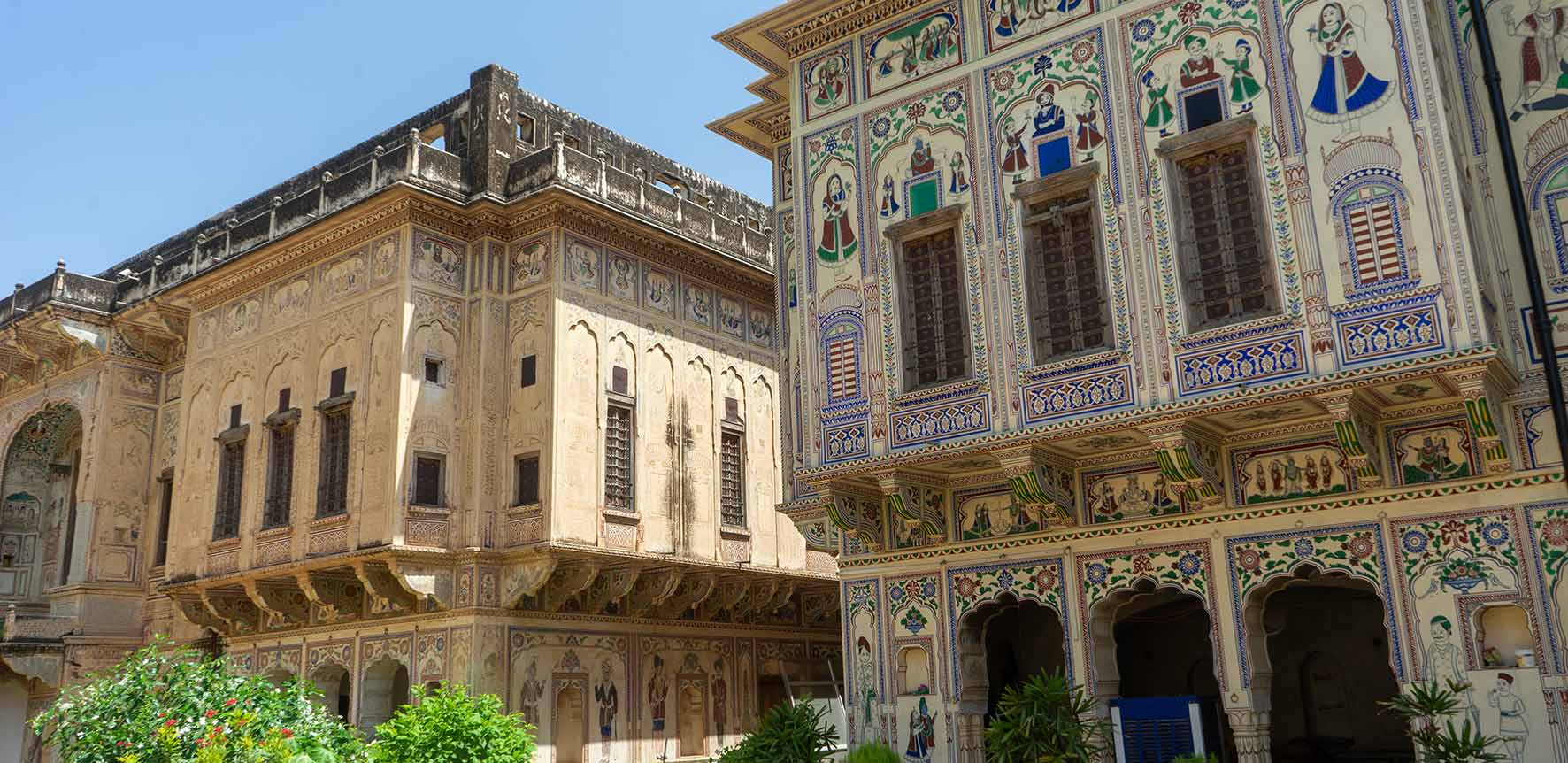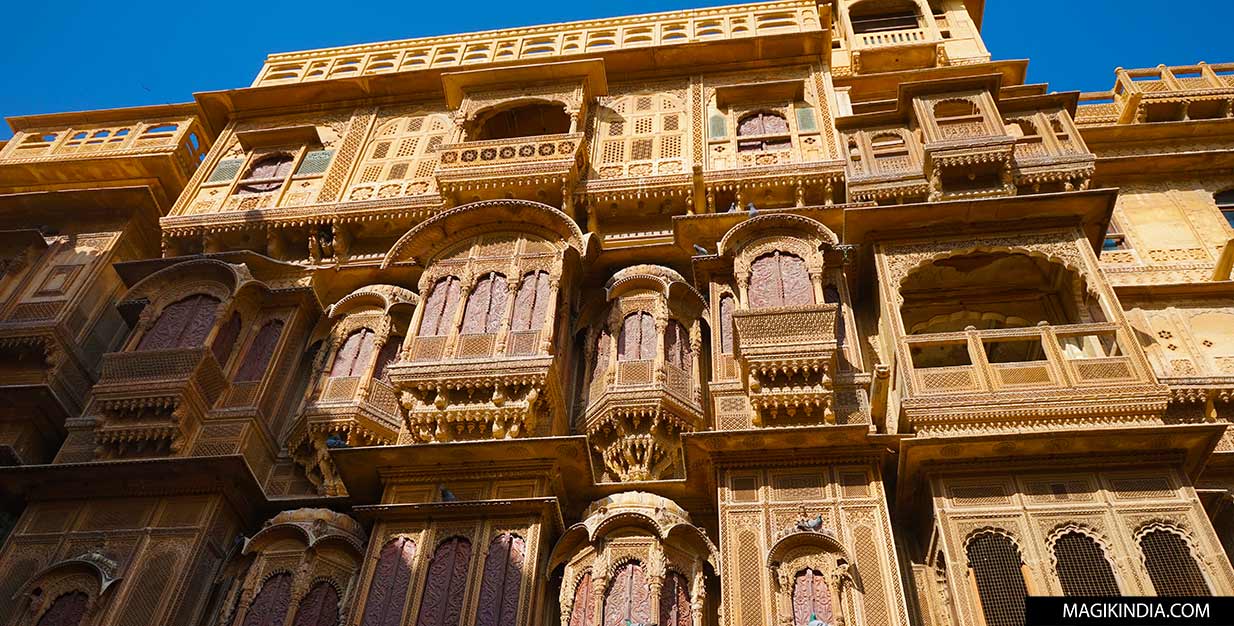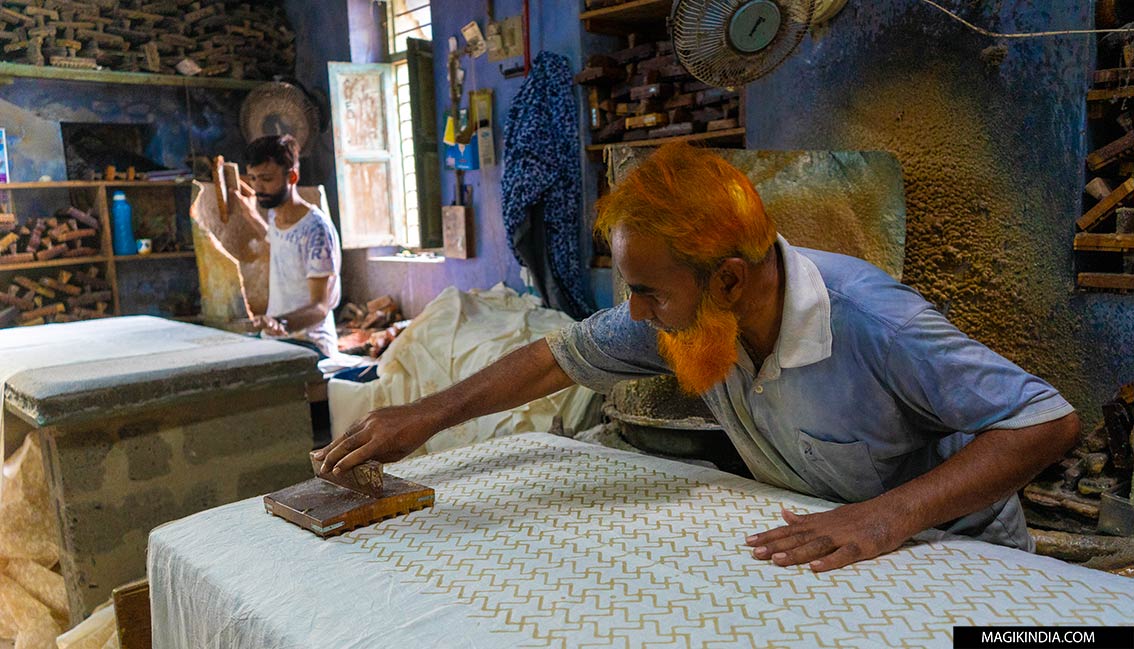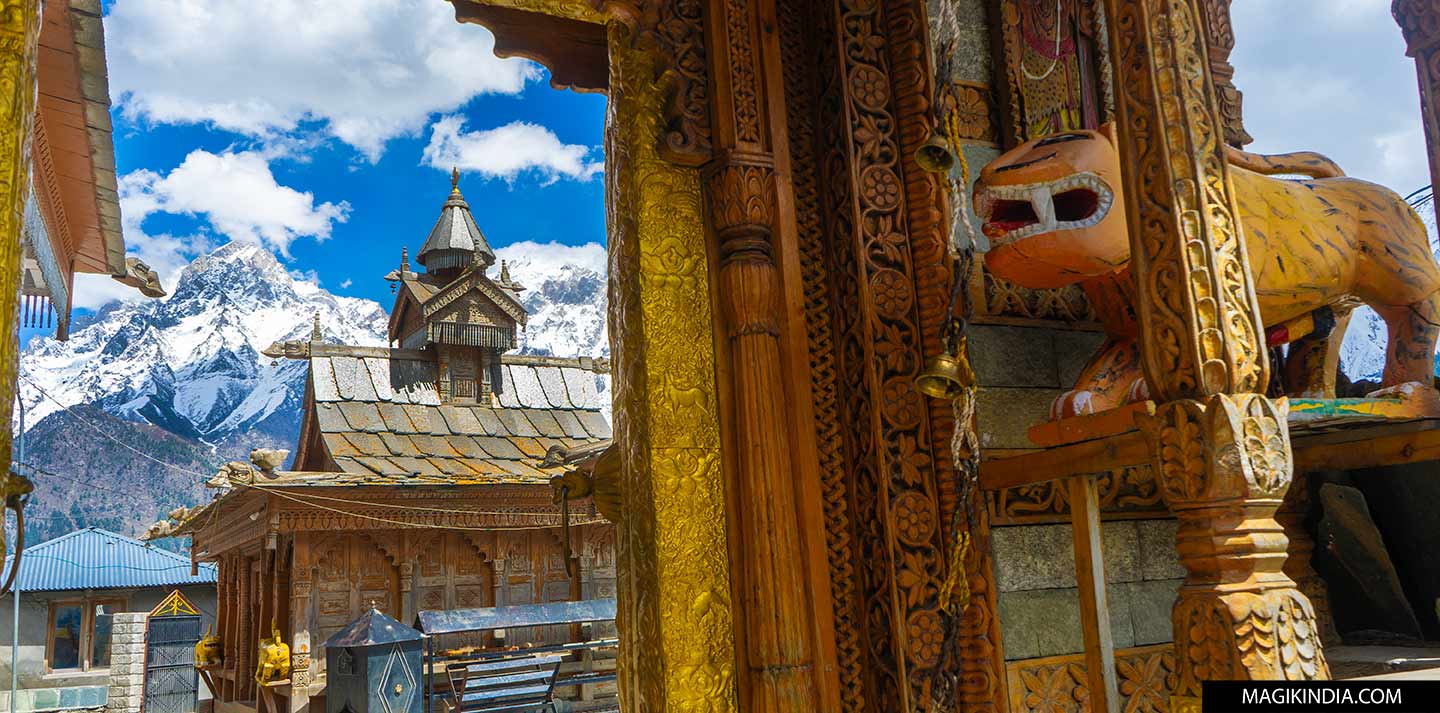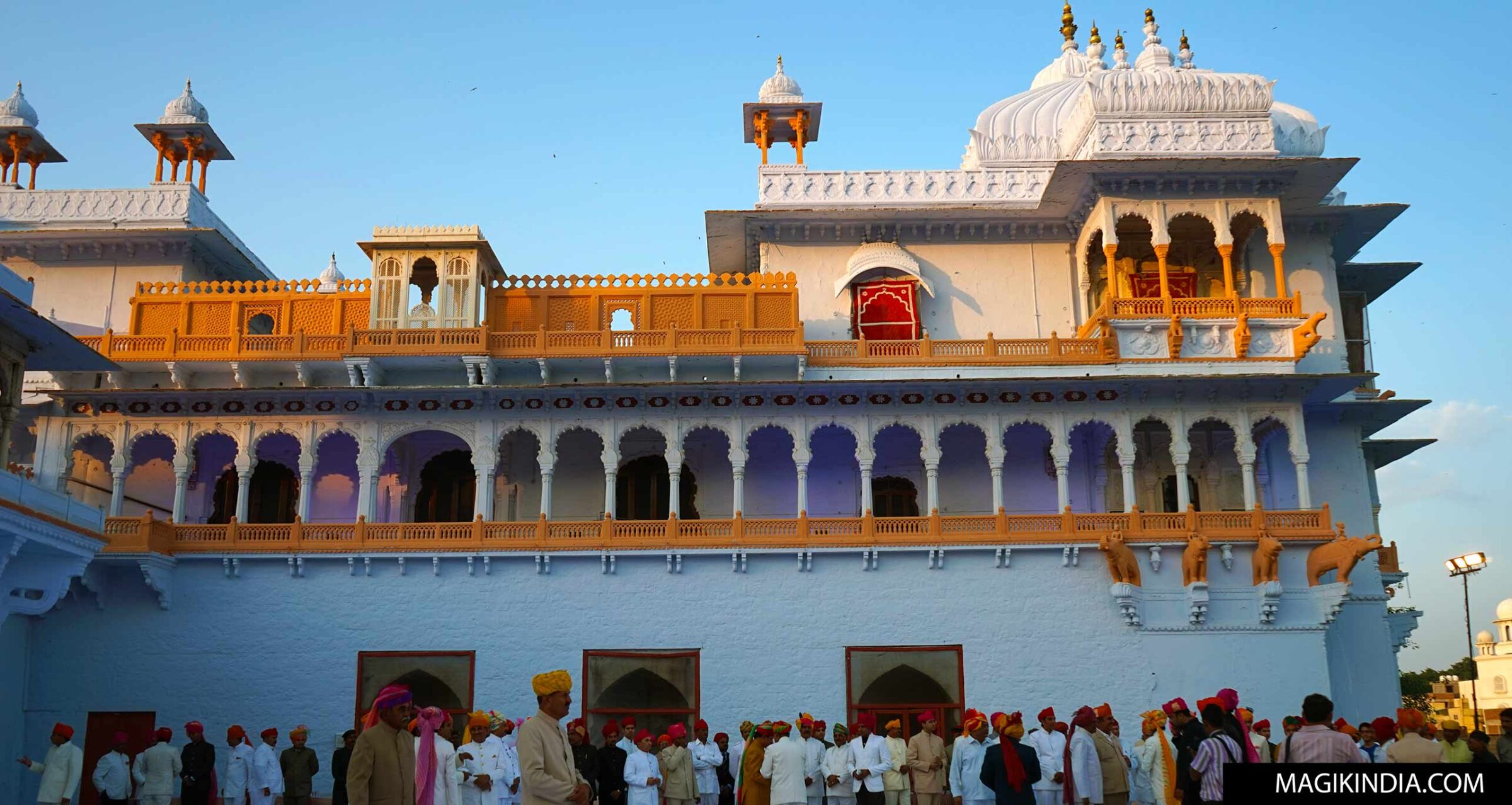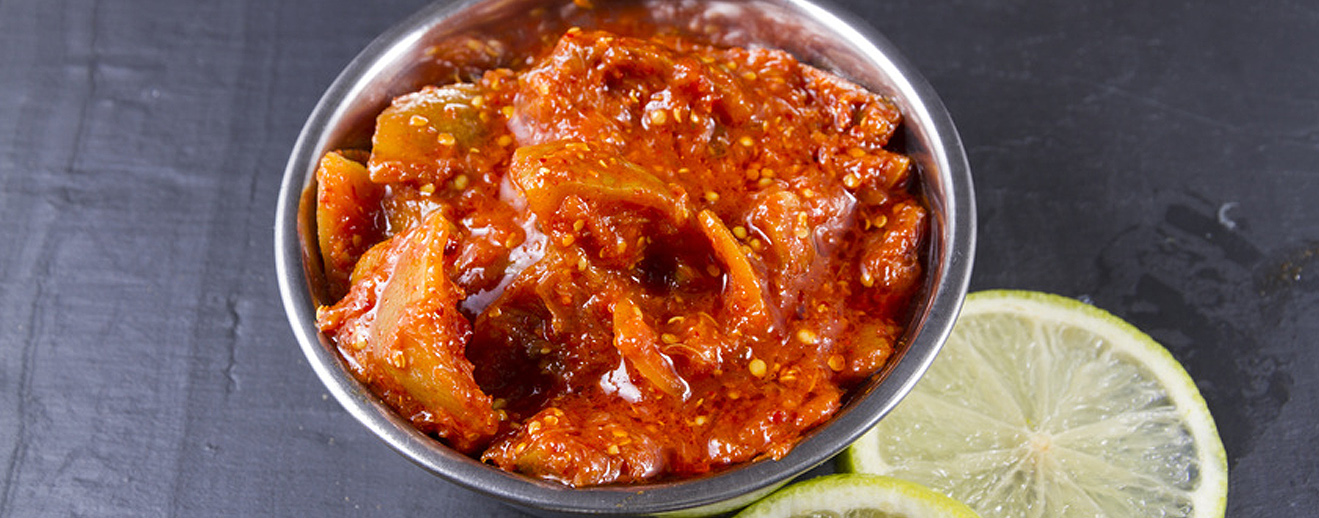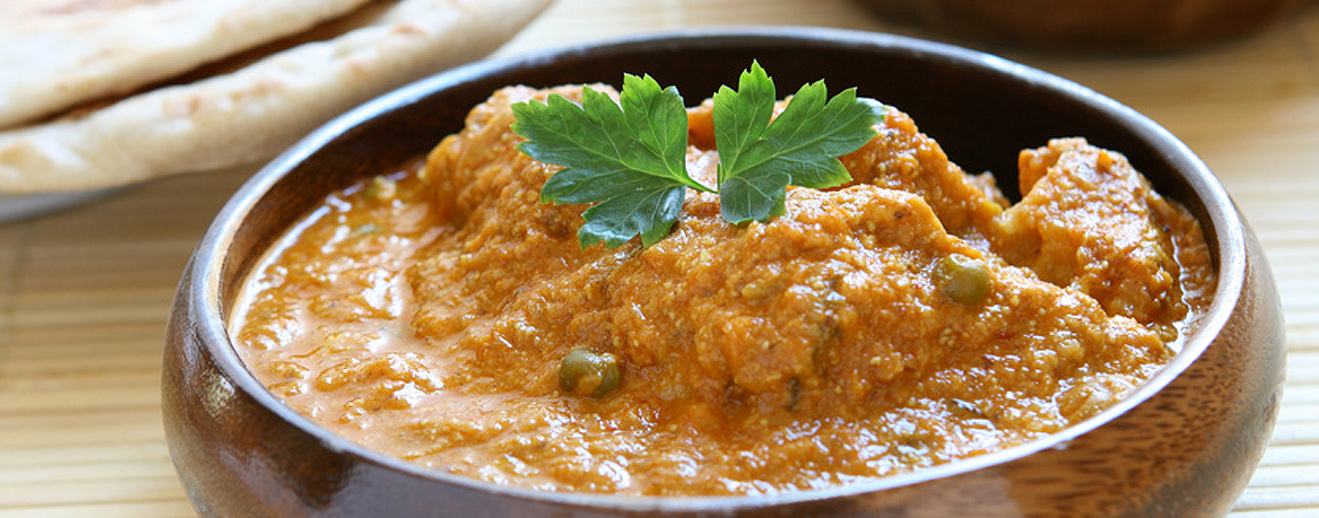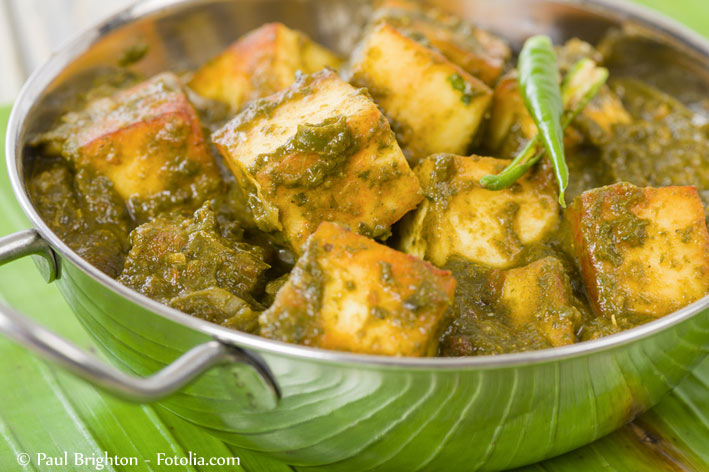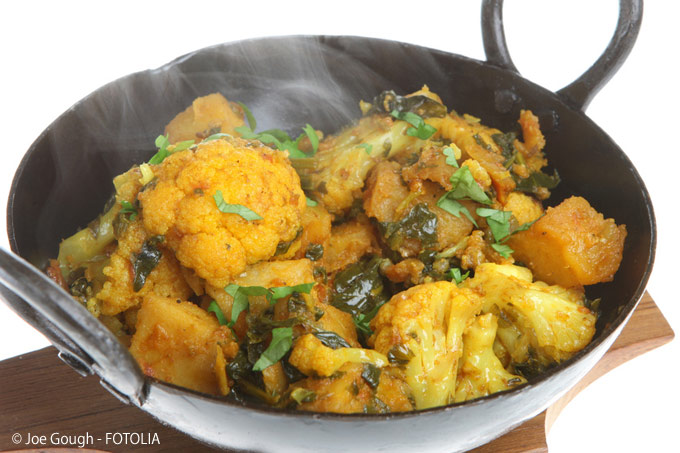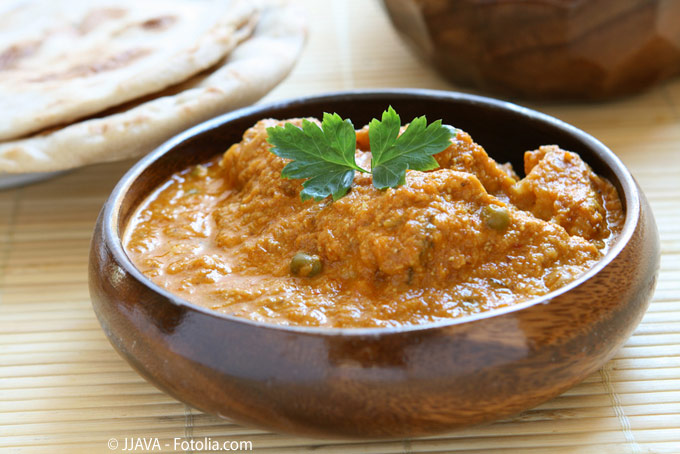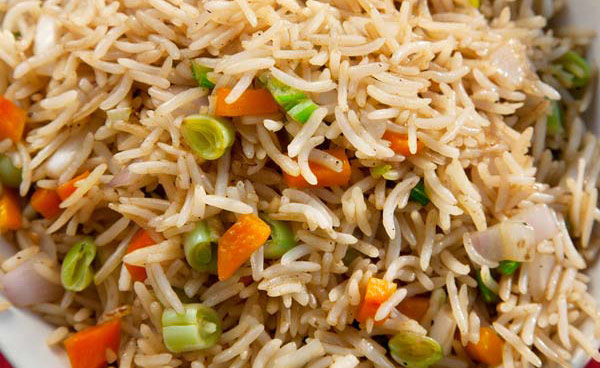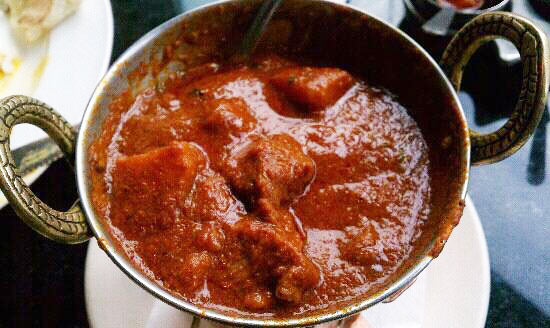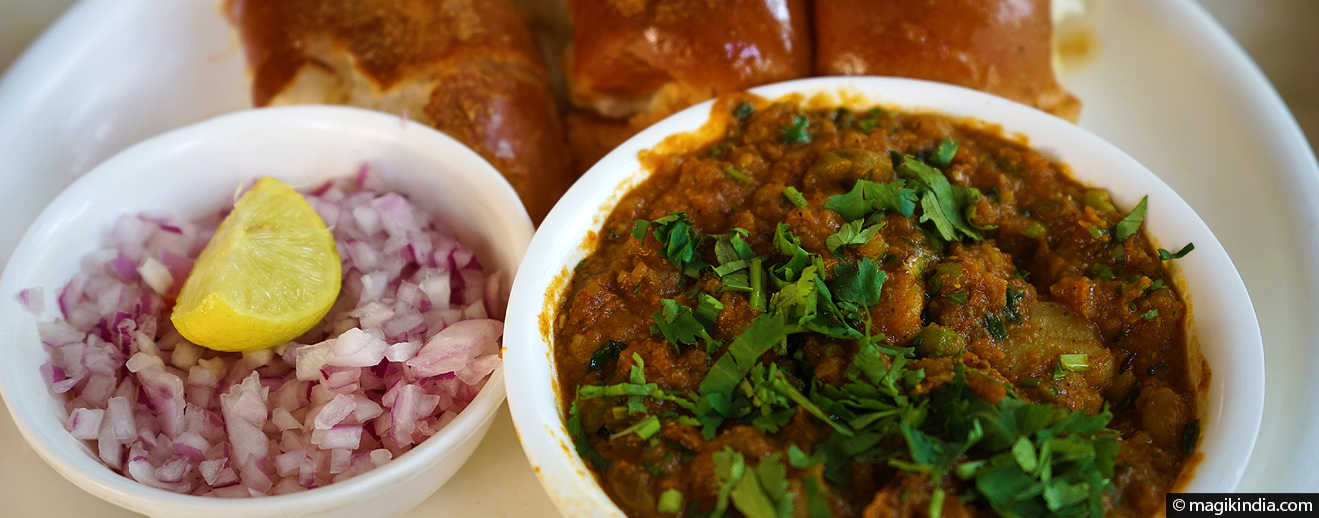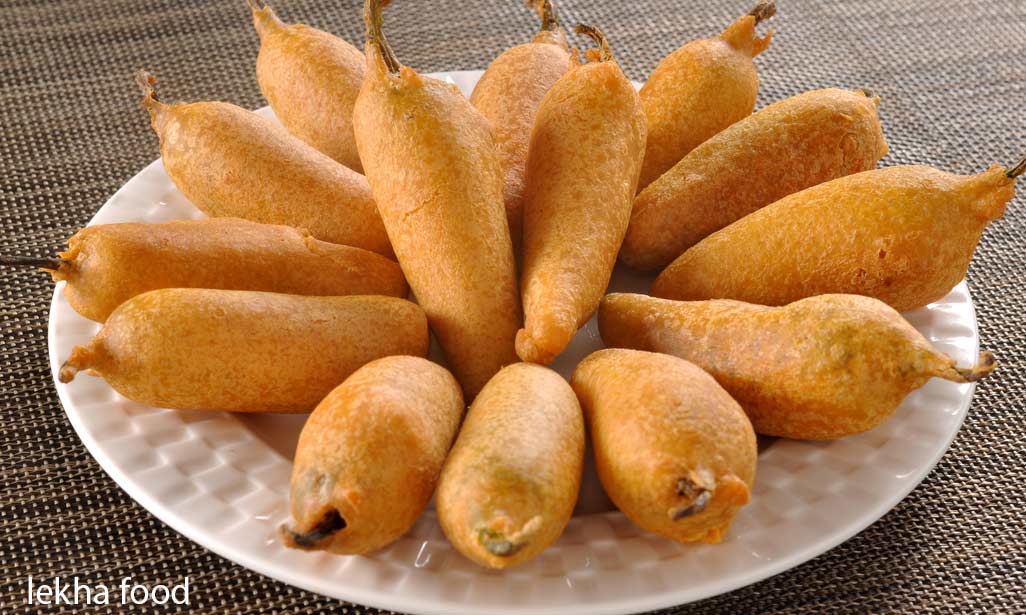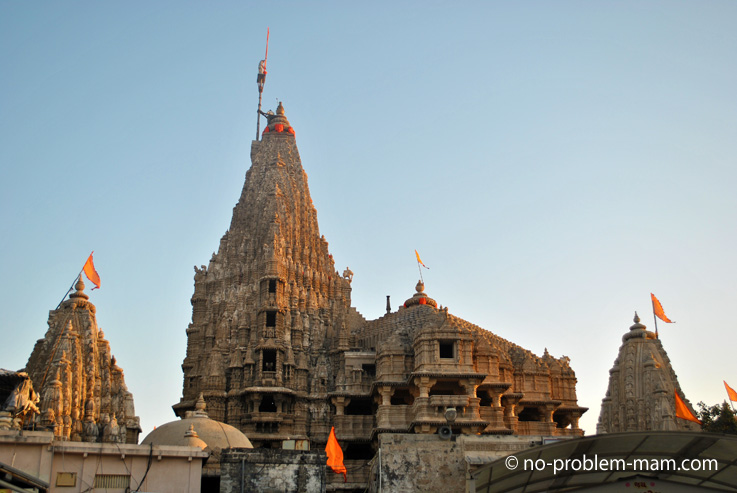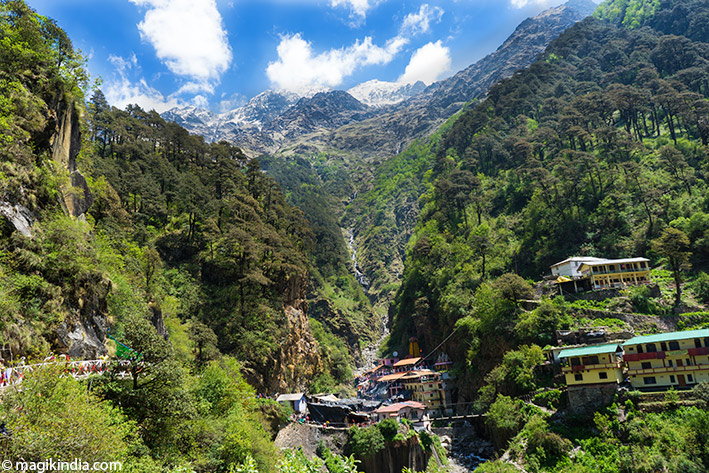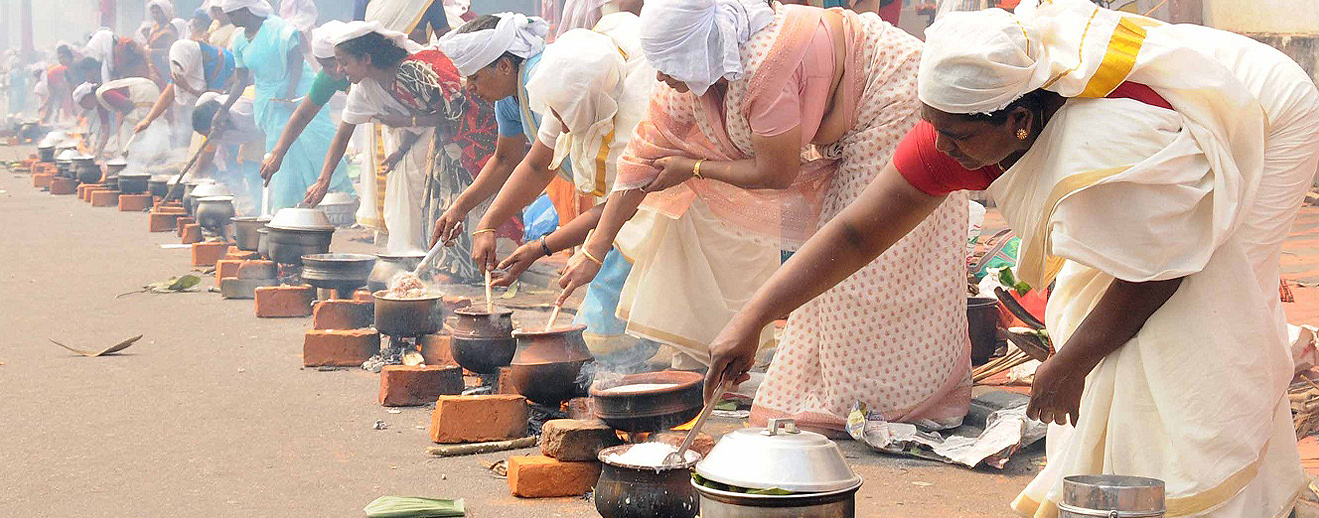
Namaskaram !
Welcome, Padharo ! I'm Mathini, a French woman who has been living in Rajasthan for 10 years. Despite being imbued with Indian culture from a young age it wasn't until 2014 that my Indian adventure really began. I left everything behind in France and set off on a 6-year journey through the land of Gandhi. These adventures are gathered in this blog which aspires, in an intentionally positive spirit, to bear witness to India's remarkably diverse and multifaceted cultural heritage. If this website sparks a desire to pack your bags and set off for an Indian adventure, it will have achieved its purpose. Subh Yatra on Magik India and beautiful explorations in the sacred land of Bharat...
Most Indian breads are flatbreads, made without leavening and cooked on a flat or concave pan called a tava or fried in oil. Bread is a staple of the Indian diet, especially in the North where a meal without chapatis is almost unthinkable.
I make a small aside concerning the flours used in India.There is a wide variety of them but wheat flour, rice, lentils, chick peas and corn are the most commonly used.
Wheat flour
- Atta : Atta refers to whole wheat with brownish white color. Most atta is milled from the semi-hard wheat varieties, also known as durum wheat. Hard wheats have a high content of gluten (a protein composite that gives elasticity), so doughs made out of atta flour are strong and can be rolled out very thin. Atta is used to make most indian flatbreads, such as chapati, roti, naan and puri.
- Maida : Maida is a finely milled refined wheat flour, closely resembling cake flour. Maida flour is used extensively in making bakery products such as pastries and breads (parrot, naan, bathura)
- Shooji : Shoji or rawa is semolina. There are actually two types of grinds, sooji and medium sooji. For regular Sooji, the grain is ground to be like coarse grains of sand. Medium sooji is more finely ground. Semolina is used to make tasty upma, rava idli, khichdi, and desserts like halwa and kheer.
Lentils flour (dhal)
Gluten-free and rich in protein, lentil flours are commonly used in India. Here are the best known:
- Gram / Besan : A very common Indian flour made from chickpea used for fritters as pakoras, and some pastries.
- Urad dhal : Black gram bean flour also called black soybeans used for poppodums breads and mixed with rice flour to make dosas and idli.
Rice flour (chawal ka atta)
It can be made from white or brown rice. In southern India, it is a component of several breads like idli and dosa.
Corn flour (makai ka Atta)
Corn flour is the most consumed flour after wheat flour, tied with rice flour. It is involved in many dishes and breads like “ki roti maki” the favorite Punjab bread consumed during the winter season.
The most popular breads of India
Chapati
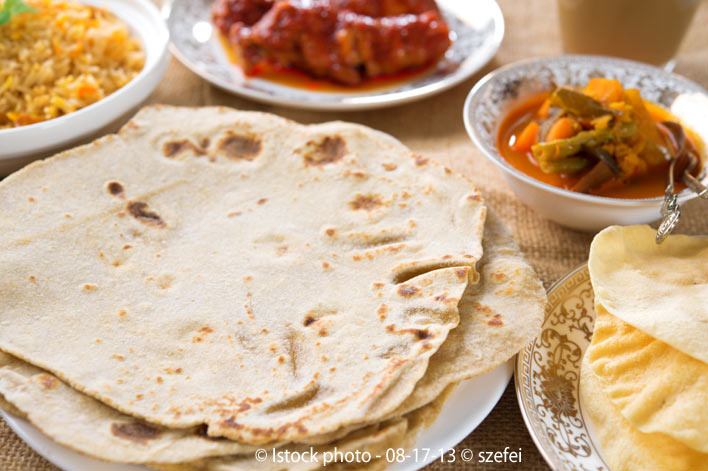 Let’s start by the most common bread of North India. Chapati is an unleavened flatbread (also known as roti) made out Atta flour and cooked on a tava (flat skillet).
Let’s start by the most common bread of North India. Chapati is an unleavened flatbread (also known as roti) made out Atta flour and cooked on a tava (flat skillet).
The word chapat in Hindi means “to slap”, and the traditional method of forming rounds of thin dough is by slapping the dough between the wetted palms of the hands. With each slap, the round of dough is rotated.
Often, the top of a chapati is slathered with butter or ghee (clarified butter). A piece of chapati is torn off and used to pick up the ingredients that make the meal.
Paratha
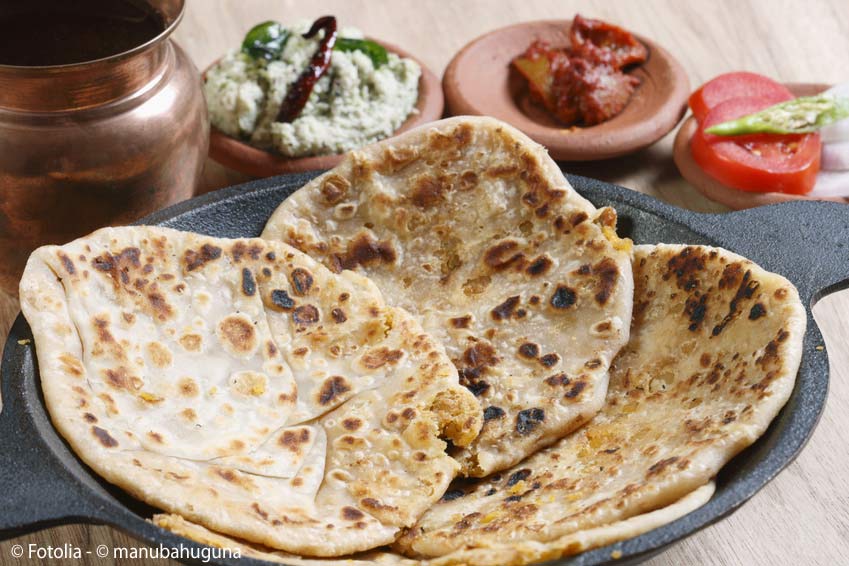 A paratha is a flatbread that originated in the north of the Indian Subcontinent. It is still quite prevalent in the north of India, where wheat is grown and is the traditional staple of the area.
A paratha is a flatbread that originated in the north of the Indian Subcontinent. It is still quite prevalent in the north of India, where wheat is grown and is the traditional staple of the area.
Paratha is an amalgamation of the words “parat” and “atta” which literally means layers of cooked dough. Parathas are thicker and more substantial than chapatis/rotis and this is either because, in the case of a plain paratha, they have been layered by coating with ghee or oil and folding repeatedly
Parathas can be eaten as a breakfast dish or as a tea-time (tiffin) snack.
Puri
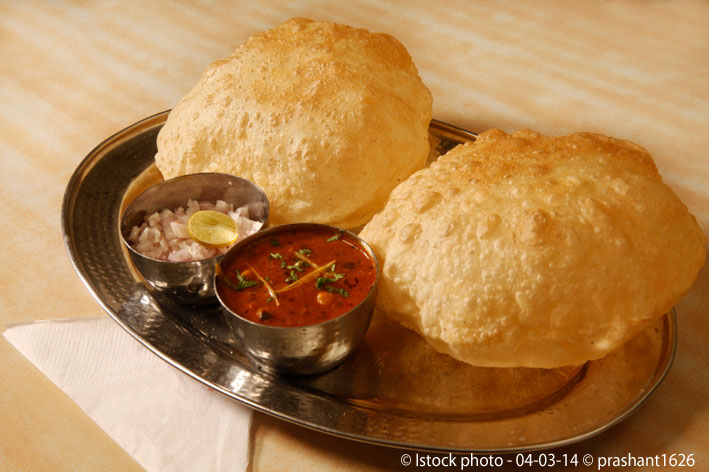 Poori is an unleavened deep-fried Indian bread, commonly consumed on the Indian subcontinent. It is eaten for breakfast or as a snack or light meal.
Poori is an unleavened deep-fried Indian bread, commonly consumed on the Indian subcontinent. It is eaten for breakfast or as a snack or light meal.
It is usually served with a curry or bhaji. Poori is prepared with wheat flour, either atta (whole wheat flour), maida (refined wheat flour), or sooji (coarse wheat flour). Maida flour is the most common flour used in making Pooris.
A dough of flour and salt is either rolled out in a small circle or rolled out and cut out in small circles and deep fried in ghee or vegetable oil. While deep frying, it puffs up like a round ball because moisture in the dough changes into steam which expands in all directions. When it is golden-brown in color, it is removed and may be served hot or saved for later use.
Bhatura
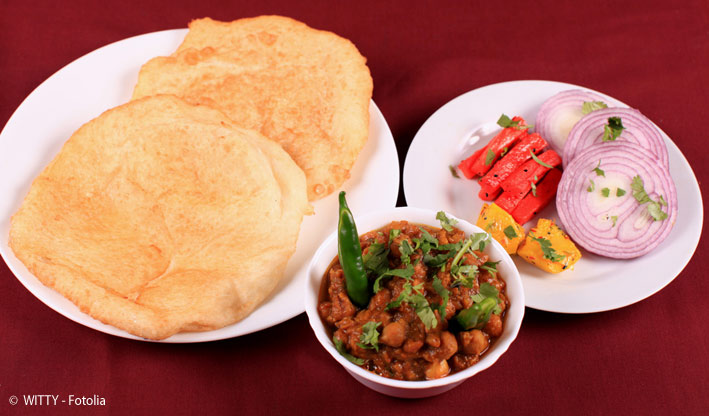 Bhatura is a fluffy deep-fried leavened bread from North India.
Bhatura is a fluffy deep-fried leavened bread from North India.
A typical recipe includes white flour (maida), yogurt, ghee or oil, and either yeast or baking powder. Once kneaded well, the dough is left to rise, and then small balls of it are either hand-rolled or flattened using a rolling pin. Then the bread pieces are deep fried until they puff up into a lightly browned, soft, fluffy bread, which is elastic and chewy.
It is often eaten with chickpea curry (chole), making the traditional dish ‘chole bhature‘.
Dosa
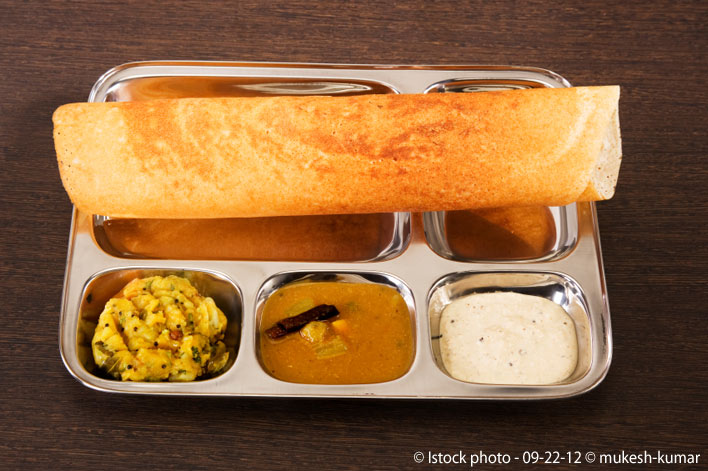 Dosa is a fermented crepe made from rice batter and black lentils. It is a staple dish in South Indian.
Dosa is a fermented crepe made from rice batter and black lentils. It is a staple dish in South Indian.
A mixture of rice and urad dal that has been soaked in water is ground finely to form a batter. Some add a handful of fenugreek seeds soaked along with the rice. The proportion of rice to lentils is generally 4:1 or 5:1. The batter is allowed to ferment overnight.
After the overnight fermentation, the batter is mixed with water to get the desired thickness. The batter is then ladled onto a hot tava (griddle) greased with oil or ghee (clarified butter). It is spread out evenly with the base of a ladle or bowl to form a pancake. A dosa is served hot, either folded in half or rolled like a wrap.
It is also usually served with chutney and sambar.
Naan
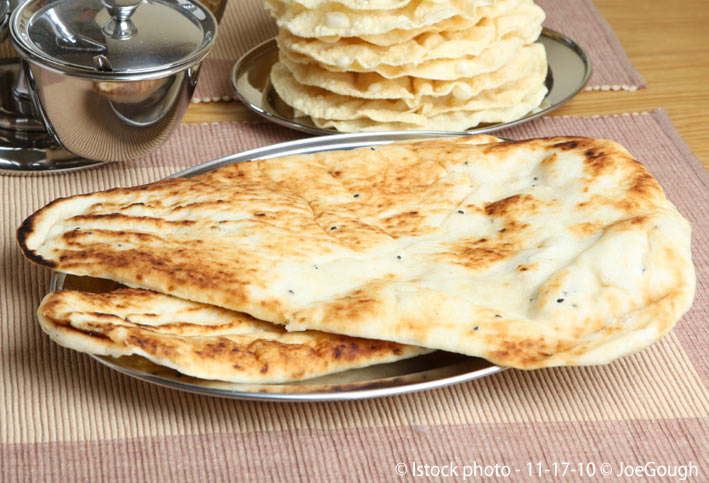 Naan is a leavened, oven-baked flatbread. Generally, it resembles pita and, like pita bread, is usually leavened with yeast or with bread starter (leavened naan dough left over from a previous batch);
Naan is a leavened, oven-baked flatbread. Generally, it resembles pita and, like pita bread, is usually leavened with yeast or with bread starter (leavened naan dough left over from a previous batch);
unleavened dough (similar to that used for roti) is also used. Naan is cooked in a tandoor, from which tandoori cooking takes its name. This distinguishes it from roti, which is usually cooked on a flat or slightly concave iron griddle called a tava.
Typically, it is served hot and brushed with ghee or butter. It can be used to scoop other foods, or served stuffed with a filling.
Parotta
 A parotta is a layered flatbread made from maida flour, from the culinary tradition of parts of Southern India, especially Tamil Nadu as well as Kerala.
A parotta is a layered flatbread made from maida flour, from the culinary tradition of parts of Southern India, especially Tamil Nadu as well as Kerala.
Parottas are usually available as street food. It consists in thin multiple layers which are flaky and smooth at the same time.
It is usually eaten with different curries.
Papadum
Papadum or papad is a thin, crisp disc-shaped food typically based on a seasoned dough usually made from peeled black gram flour (urad flour), fried or cooked with dry heat.
Flours made from other sources such as lentils, chickpeas, rice, tapioca or potato, can be used.
Papadums are typically served as an accompaniment to a meal or as an appetizer or snack, sometimes with toppings such as chopped onions, chopped carrots, chutneys or other dips and condiments.
Baati
 Baati is a hard, unleavened whole-grain wheat bread of Rajasthan.
Baati is a hard, unleavened whole-grain wheat bread of Rajasthan.
The procedure for making Baatis is very different than any North Indian bread. Traditionally Baatis are first boiled in the water and then baked in the clay oven (Tandoor) or grill.
Baati is usually eaten with dal, hence the dish ‘dal baati‘.
Makki di roti
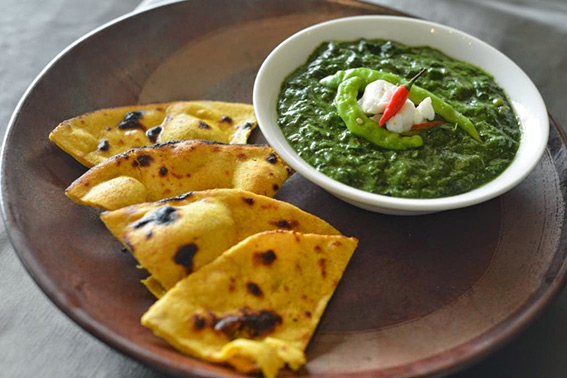 Makki di roti or Makhai ki roti is a flat, unleavened Punjabi bread made from corn flour.
Makki di roti or Makhai ki roti is a flat, unleavened Punjabi bread made from corn flour.
Like most breads in indian cuisine, it is baked on a tava. Makki di roti is generally made during winter in Punjab and is perhaps best known when accompanied with saag (a leaf-based dish like spinach, mustard leaf…), makkhan (butter) and buttermilk (chaas)
Czot
 Czot is a popular soft bread of Kashmir prepared in tandoor (earth oven) and made of Atta flour. It is usually used as breakfast with salted butter and cinnamon tea. A real treat. During Ramzan or Ramadan it is the only bread that is baked. In Kashmir, the tradition is to served Czot with meat when happy events occur like marriage or new born baby.
Czot is a popular soft bread of Kashmir prepared in tandoor (earth oven) and made of Atta flour. It is usually used as breakfast with salted butter and cinnamon tea. A real treat. During Ramzan or Ramadan it is the only bread that is baked. In Kashmir, the tradition is to served Czot with meat when happy events occur like marriage or new born baby.
Sambar
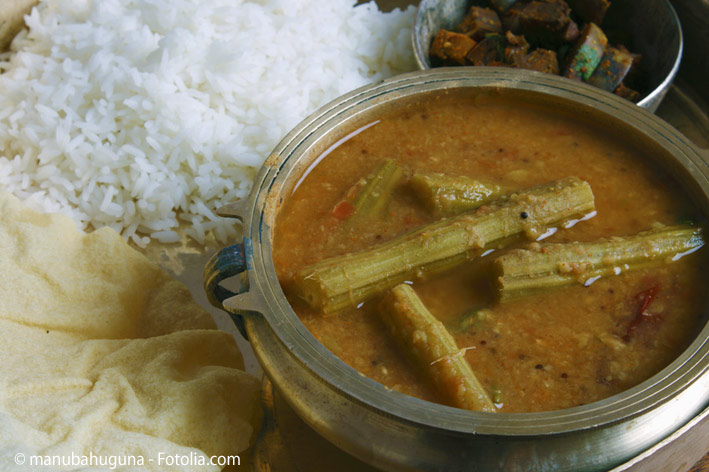 Sambar is a lentil-based vegetable stew or chowder based on a broth made with tamarind and other spices.
Sambar is a lentil-based vegetable stew or chowder based on a broth made with tamarind and other spices.
It is popular in South Indian cuisines, adapted in each to its taste and environment.
Sambar is usually served with steamed rice as one of the main courses of both formal and everyday South Indian cuisine.
Dal, lentils
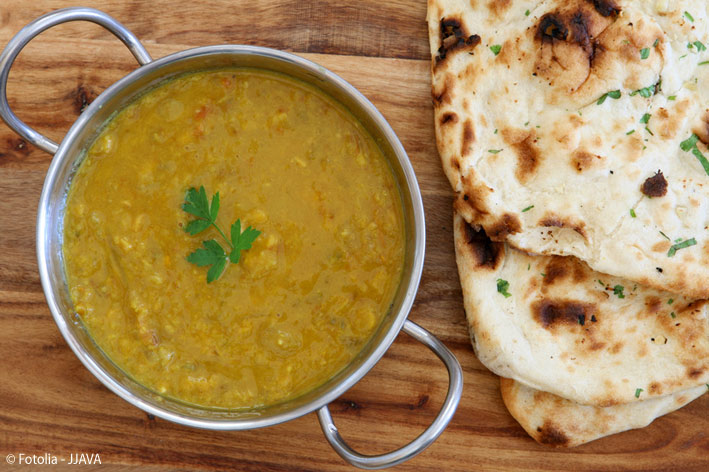 Dhal or Dal or is the name given to the pulses-based dishes in India but it is also used to refer pulses.
Dhal or Dal or is the name given to the pulses-based dishes in India but it is also used to refer pulses.
Lentils and pulses in general are an integral part of Indian cuisine. In a country where the population is over 50% vegetarian (500 million people), these pulses come to give their full protein and vitamins.
There are over 50 varieties of legumes in India …
Raïta
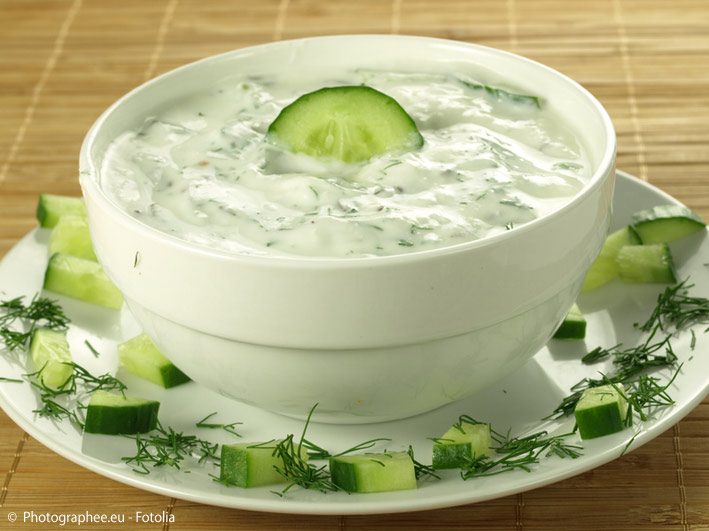 Raita is a side dish made with dahi (yogurt, often referred to as curd) together with raw or cooked vegetables, more seldom fruit, or in the case of boondi raita, with fried droplets of batter made from besan (chickpea flour, generally labelled as gram flour).
Raita is a side dish made with dahi (yogurt, often referred to as curd) together with raw or cooked vegetables, more seldom fruit, or in the case of boondi raita, with fried droplets of batter made from besan (chickpea flour, generally labelled as gram flour).
The closest approximation in western cuisine is a side dish or dip, or a cooked salad.
Rasam
 Rasam is a South Indian soup traditionally prepared using tamarind juice as a base, with the addition of tomato, chili pepper, pepper, cumin and other spices as seasonings.
Rasam is a South Indian soup traditionally prepared using tamarind juice as a base, with the addition of tomato, chili pepper, pepper, cumin and other spices as seasonings.
Steamed lentils can be added along with any preferred vegetables. It is eaten with rice or separately as a spicy soup.
In a traditional meal, it is preceded by a sambar rice course and is followed by curd rice. Rasam has a distinct taste in comparison to the sambar due to its own seasoning ingredients and is usually fluid in consistency.
Achaar
 Achaar are made from certain varieties of vegetables and fruits – finely chopped and marinated in brine or edible oils along with various Indian spices.
Achaar are made from certain varieties of vegetables and fruits – finely chopped and marinated in brine or edible oils along with various Indian spices.
The most common South Asian-style pickles are made from mango and lime.
Homemade pickles are prepared in the summer and are matured by exposing to sunlight for up to two weeks. The pickle is kept covered with muslin while it is maturing.The high concentrations of salt, oil, and spices act as preservatives.
Chutney
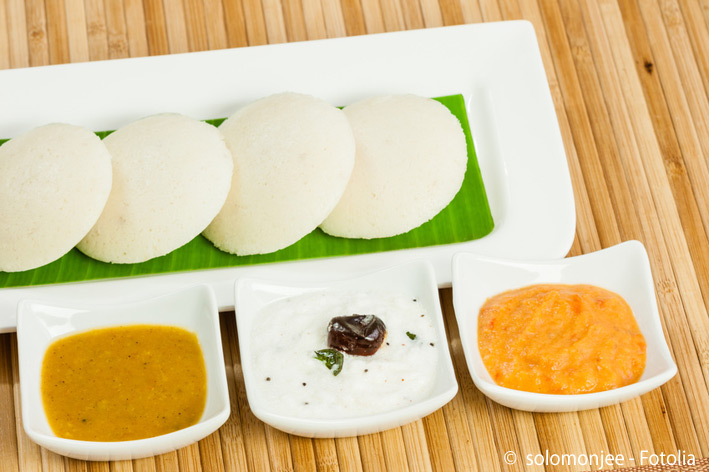 Chutneys are an integral part of Indian cuisine. They accompany many dishes and there are of an infinite variety. Some are bittersweet like mango chutney and papaya for example, but most are salty and fragrant sauces.
Chutneys are an integral part of Indian cuisine. They accompany many dishes and there are of an infinite variety. Some are bittersweet like mango chutney and papaya for example, but most are salty and fragrant sauces.
Chutney word is derived from the Hindi “chatni” meaning “hot spices”.
During colonial times, the British imported it in the West and turned into a form of bittersweet marmalade.
The most famous are the « tentai chatni » or coconut chutney accompanying idli and dosa, very popular in the south of India and the “takkali chatni” with tomato, coriander chutney or fresh mint.
In India the main dish is usually a vegetable, meat, or pulse curry with rice and/or some form of bread. Rice is the typical accompaniment in South India while in the North wheat-based breads such as chapati and naan are more common. Here are a few examples of the infinite variety you can find.
Thali
Thali is a meal made up of a selection of various dishes. It simply means a round platter used to serve food.
The idea behind a Thali is to offer all the 6 different flavours of sweet, salt, bitter, sour, astringent and spicy on one single plate. According to Indian food serving customs, a proper meal should be a perfect balance of all these 6 flavours.
Dishes served in a Thali vary from region to region in South Asia and are usually served in small bowls, called katori. These ‘katoris’ are placed along the borders of the round tray – the actual thali; even a steel tray with multiple compartments is used.
Typical dishes include rice, dal, vegetables, roti, papad, curd (yoghurt), small amounts of chutney or pickle, and a sweet dish to top it off. Rice or Roti is the usual main dish which occupies the central portion of the Thali, while the side dishes like vegetable curries and other aforementioned delicacies are lined circularly along the round Thali.
Vegetarian thalis are very typical and commonplace in Tamil Nadu canteens (and South India in general), and is a popular lunch choice. In some restaurants, a thali may include “bottomless” refills on all components of food, the idea being that one eats until fully satisfied.
Palak Paneer
Palak paneer is a vegetarian dish consisting of spinach, tomato gravy sauce and paneer in a thick paste made from puréed spinach and seasoned with garlic, garam masala, and other spices.
Paneer is a fresh cheese. It is an unaged cheese made by curdling heated milk with lemon juice, vinegar, or any other food acids.
Aloo Gobi
Aloo gobi is a dry dish made with potatoes (aloo), cauliflower (gobi) and Indian spices.
It is yellowish in color, due to the use of turmeric, and occasionally contains kalonji and curry leaves. Other common ingredients include garlic, ginger, onion, coriander stalks, tomato, peas, and cumin.
A number of variations and similar dishes exist, but the name remains the same.
Malai Kofta
Malai Kofta is the traditional dish of northern India. Malai means “cream” and kofta “fried dumplings.”
There are many variations but in general, the veggie balls are made of mashed potatoes combined with paneer (Indian cheese).
The Malai is a creamy tomato sauce flavored with spices (cardamom, caraway, coriander, garam masala…).
Dal Makhani
Dal makhani (“Buttery Lentil”) is a popular dish originating from the Punjab region of India.
The primary ingredients in dal makhani are whole black lentil (urad) with red kidney beans (rajma), butter and cream.
The traditional preparation of dal makhani involves a series of time-consuming procedures, which can take up to 24 hours to complete. However, with the availability of modern cooking equipment, including electric pressure cookers, the preparation time of the dish has reduced significantly to 2–3 hours.
Biryani
Biryani is a mixed rice dish from the Indian subcontinent. It is made with spices, rice and meat or vegetables.
The spices and condiments used in biryani may include, but are not limited to, ghee, nutmeg, mace, cumin, pepper, cloves, cardamom, cinnamon, bay leaves, coriander, mint leaves, ginger, onions, and garlic. Biryani and pullao are different.
In biryani the rice (plain or fried) is cooked separately from the thick sauce (curry of meat or vegetables). The curry and the rice are then brought together and layered.
Dal Baati Churma
Dal Baati is a three-in-one dish typical from Rajasthan comprising dal (lentils) and baati (hard bread rolls).
The basic baati is generally made out of wheat flour and semolina. Baatis can be baked in a gas tandoor or an electric oven as well.
Dal (lentil) is a spicy side dish made of lentils and tempered with spicy tadka.
Later the baatis are crushed and sugar or jaggery is mixed into them to make a sweet dessert.
Pulao
Pulao is a spicy rice dish prepared by cooking rice with various vegetables and spices.
the assortment of spices, veggies and rice are first sautéed in oil and ghee and then cooked in pressure cooker as you would cook plain rice.
Biryani and pullao are different. In biryani the rice (plain or fried) is cooked separately from the thick sauce (curry of meat or vegetables). The curry and the rice are then brought together and layered.
Bhindi Masala

Bhindi masala is stir fried okra (ladies’s finger) mixed sautéed with onions and tomatoes and spices such as garam masala and other locally available ground spices.
Bhindi is one of the most popular and nutritious vegetables in India.
It can be served as a side dish in accompaniment with steamed rice and dal or with chapati
Chicken Makhani

Butter chicken or murgh makhani is a dish made of chicken cooked in a mildly spiced curry sauce.
Chicken is marinated for several hours in a cream and spice mixture. The spices may include garam masala, ginger, garlic paste, lemon or lime, pepper, coriander, cumin, turmeric and chili.
The chicken is usually cooked in a tandoor (traditional clay oven), but may be grilled, roasted, or pan fried. It is served in a mild curry sauce that includes butter.
There are many variations on the composition and spicing of the sauce. Spices may include asafoetida, cumin, cloves, cinnamon, coriander, pepper and fenugreek.
Lamb Vindaloo
Lamb vindaloo is an Indian curry dish popular in the region of Goa, the surrounding Konkan, and many other parts of India.
The name “vindaloo” is derived from the Portuguese dish “carne de vine d’alhos”, a dish of meat marinated in wine and garlic.
The Portuguese dish was modified by the substitution of vinegar (usually palm vinegar) for the red wine and the addition of red Kashmiri chili peppers with additional spices to evolve into vindaloo.
The Anglo-Indian version of a vindaloo is marinated in vinegar, sugar, fresh ginger, and spices overnight, then cooked with the addition of further spices.
Indians love snacking and there are snack stalls on every street corner. Here are a few examples of the infinite variety you can find.
Chaat
 Chaat is a term describing savory snacks, typically served at road-side tracks from stalls or food carts.
Chaat is a term describing savory snacks, typically served at road-side tracks from stalls or food carts.
The chaat variants are all based on fried dough, with various other ingredients.
There are common elements among these variants including potaoes, dahi, or yogurt; chopped onions and coriander; Sev (small dried yellow salty noodles); and chaat masala, typically consisting of amchoor (dried mango powder), cumin, Kala Namak (rock salt), coriander, dried ginger.
Pakora
 Pakora also called pakoda, is a fried snack (fritter).
Pakora also called pakoda, is a fried snack (fritter).
Pakoras are created by taking one or two ingredients, such as onion, eggplant, potato, spinach, plantain, paneer, cauliflower, tomato, or chili pepper and dipped in a batter of gram flour and then deep-fried.
Pakoras are usually served as snacks or appetisers complemented with tamarind chutney, brown sauce, or ketchup.
Samosa
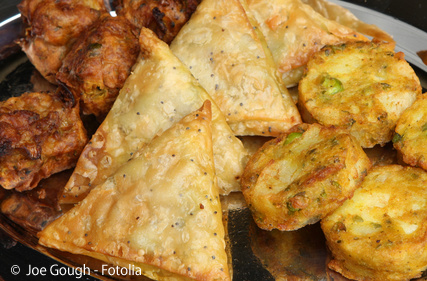 Samosa is a fried or baked pastry with a savoury filling, such as spiced potatoes, cheese, onions, peas, lentils.
Samosa is a fried or baked pastry with a savoury filling, such as spiced potatoes, cheese, onions, peas, lentils.
Its size and consistency may vary, but typically it is distinctly triangular in shape.
Indian samosas are usually vegetarian, and often accompanied by a mint sauce or chutney.
Kachori
 Kachori is a spicy snack popular in various parts of North India.
Kachori is a spicy snack popular in various parts of North India.
It is usually a round flattened ball made of fine flour filled with a stuffing of baked mixture of yellow moong dal or Urad Dal (crushed and washed horse beans), besan (crushed and washed gram flour), black pepper, red chili powder, salt and other spices.
Kachoris are often served with a chutney, often made from tamarind, mint, or coriander.
Paneer Tikka
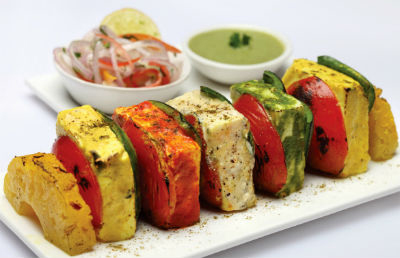 Paneer tikka is an Indian dish made from chunks of paneer (kind of cottage cheese) marinated in spices and grilled in a tandoor.
Paneer tikka is an Indian dish made from chunks of paneer (kind of cottage cheese) marinated in spices and grilled in a tandoor.
It is a vegetarian alternative to chicken tikka and other meat dishes.
It is a popular dish that is widely available in India. It is sometimes accompanied by salad and mint chutney.
Mirchi Bajji
Mirchi Bajji is a spicy Indian snack consisting of chili (Mirchi) and potato stuffing.
The mirchi bada of Jodhpur, Rajasthan is very famous combines well with another Jodhpur speciality, ‘Mawa Kachori’ dipped in sugary syrup.
It served hot with tomato sauce or occasionally with mint and tamarind chutney.
Panipuri

Panipuri is a famous street snack found in several regions of India.
The English meaning of Panipuri is “water bread”. It consists of a round, hollow puri, fried crisp and filled with a mixture of flavored water (pani), tamarind chutney, chili, chaat masala, potato, onion and chickpeas.
Cutlets
 Cutlets are croquettes which is basically a serving of minced meat or vegetables, encased in breadcrumbs and potatoes, flattened into disks, and then deep-fried.
Cutlets are croquettes which is basically a serving of minced meat or vegetables, encased in breadcrumbs and potatoes, flattened into disks, and then deep-fried.
The croquette was originally a French invention that gained a world-wide popularity as a fast-food with the advent of burgers.
In India, it is known as “cutlets” or “aloo-tikkis”. They are served with ketchup or green chutney (coriander chutney).
Pav Bhaji
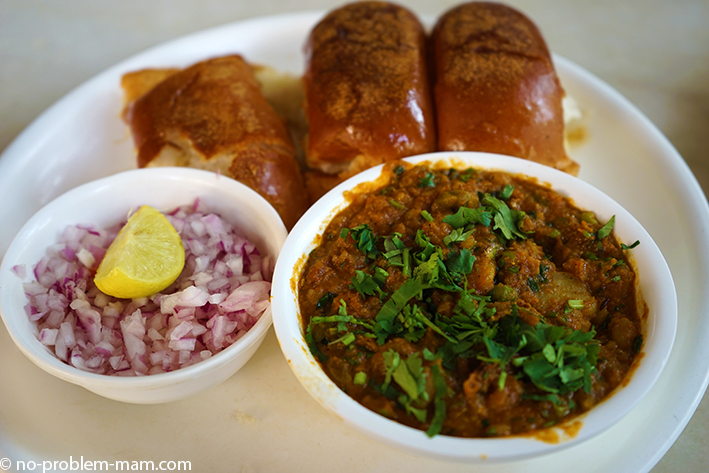 Pav bhaji is a fast food dish from Maharashtra, India, consisting of a spicy curry of mixed vegetables (bhaji) cooked in a special blend of spices and served with soft buttered pav (bread bun shallow fried in butter).
Pav bhaji is a fast food dish from Maharashtra, India, consisting of a spicy curry of mixed vegetables (bhaji) cooked in a special blend of spices and served with soft buttered pav (bread bun shallow fried in butter).
Pav bhaji is more than a mere snack, it’s a quick meal that can be grabbed on the go.
Dhokla
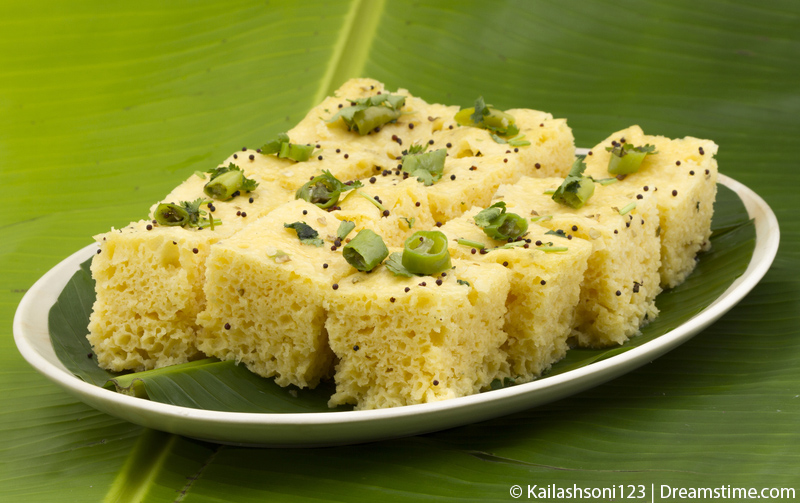 Dhokla originates from the Indian state of Gujarat. It is made with a fermented batter derived from rice and split chick peas.
Dhokla originates from the Indian state of Gujarat. It is made with a fermented batter derived from rice and split chick peas.
Dhokla can be eaten for breakfast, as a main course, as a side dish, or as a snack. It is usually served with deep fried chillies and chutney made of coriander.
It is garnished with coriander and often with grated coconut.
Namkeen
 Namkeen is the Hindi word used to describe the savory flavor.
Namkeen is the Hindi word used to describe the savory flavor.
It is derived from the word Namak (meaning salt). Namkeen is also used as a generic term to describe savory snack foods.
Namkeens are usually a mixture of spicy dry ingredients. There is an infinite variety of them and are known by different names according to the states.
The namkeens are most often made from gram flour (besan) but also puffed rice, potatoes or legumes.
The “Pancha Bhoota Sthalas” refers to the five temples dedicated to the Hindu god Shiva, each of these temples representing the five prime elements of nature; water, air, ether, fire and earth. “Pancha” means five, “Bhoota”, elements and “Sthalas”, place.
These temples are all located in the South of India, four in Tamil Nadu and Andhra Pradesh:
- EARTH (Prithvi): Ekambareswarar Temple (Kanchipuram, Tamil Nadu)
- WATER (Jalam): Jambukeswara Temple (Tiruchirapalli, Tamil Nadu)
- FIRE (Agni): Annamalaiyar Temple (Tiruvannamalai,Tamil Nadu)
- AIR /WIND (Vayu): Sri Kalahasti Temple (SriKalahasti, Andhra Pradesh)
- ETHER / SKY (Akaasam): Chidambaram Temple (Chidambaram, Tamil Nadu)
1. EARTH – Ekambareswarar Temple, Kanchipuram
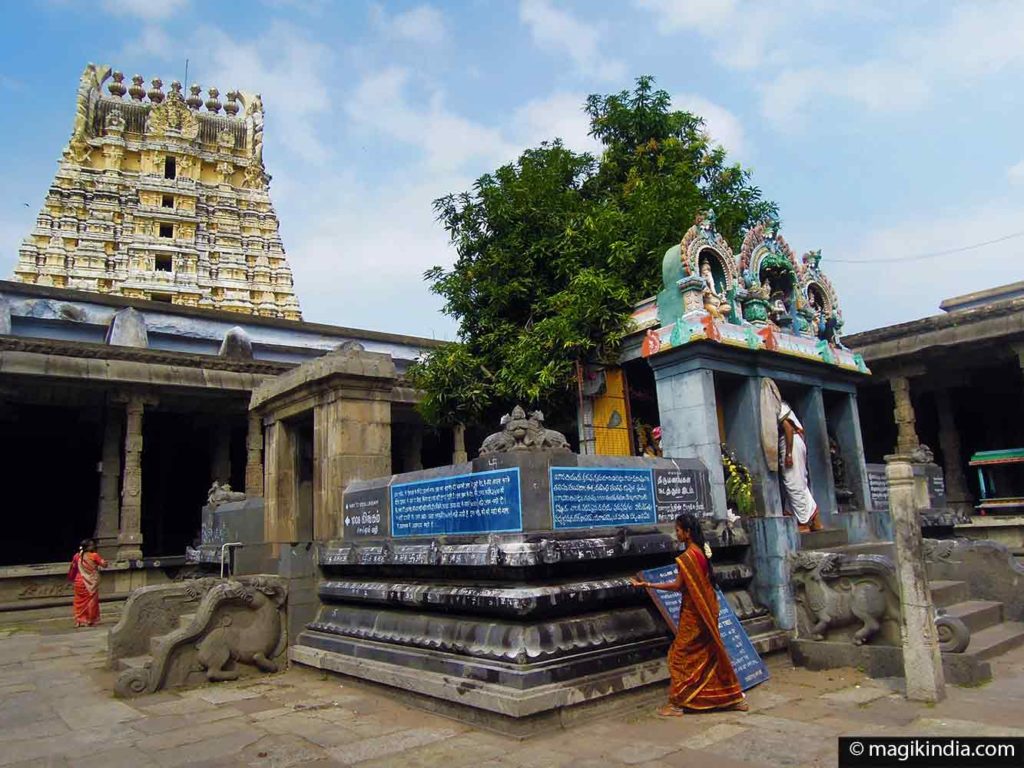
Ekambareswara, a superb temple on the north side of town, is is the largest temple in Kanchipuram.
Its gopuram (entrance tower) stands nearly 60m tall, which makes it one of the tallest in India.
The temple’s earliest foundations date from about 600 CE; successive dynasties such as the Pallavas, Pandyas and Cholas, and later the Vijayanagar kings, all remodelled or added to the building.
The sanctum sanctorum houses a Prithvi Lingam representing Earth (prithvi means “earth”).
The hall with 540 pillars and 1008 Shiva Lingams is particularly impressive. Another of the temple’s particularities is a mango tree said to be 3500 years old and to produce four different kinds of mango…

2. WATER – Jambukeswara Temple, Tiruchirapalli
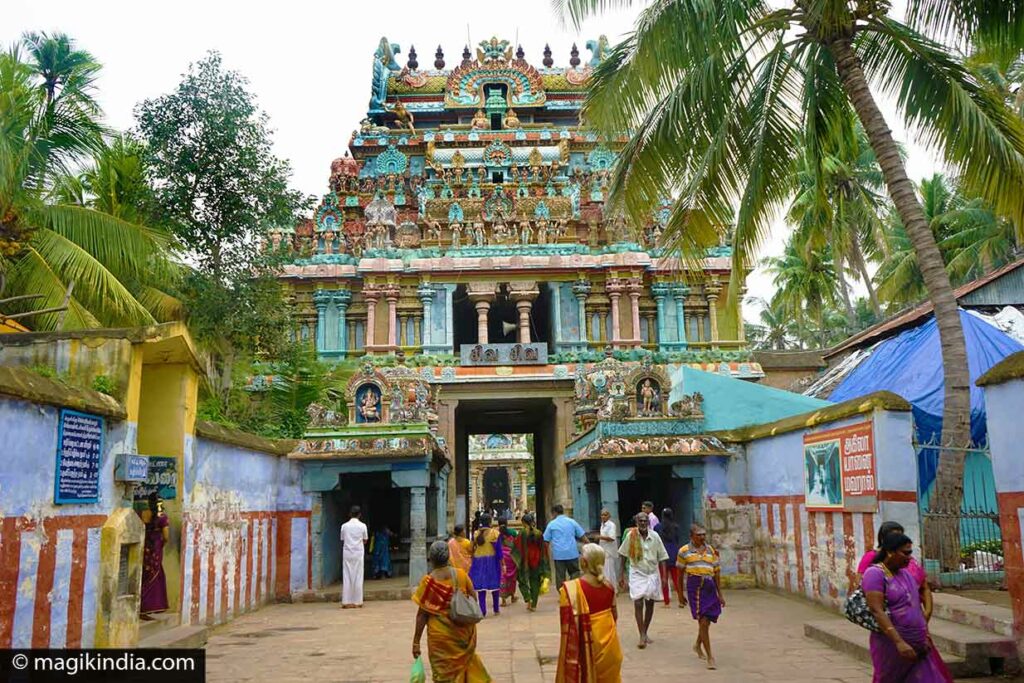
Two kilometres from famous Sri Rangam temple is Jambukeswarar, one of Trichy’s most revered temples. Its Shiva Lingam is an Appu Lingam, representing water.
The sanctum receives a constant flow of water from an underground source. Jambukeswarar temple is also one of the 275 Paadal Petra Sthalams, temples glorified in the songs of praise of the four greatest Shaivite saints or Nayanars…

3. FIRE – Annamalaiyar Temple, Tiruvannamalai
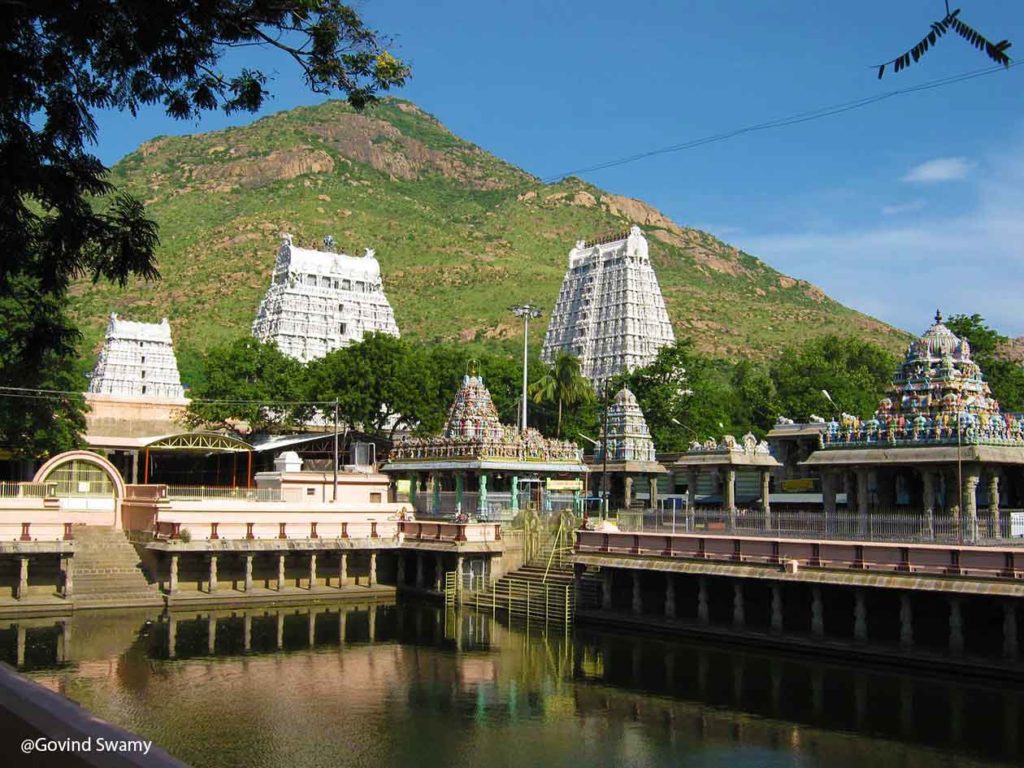
Arunachaleswarar (or Annamalaiyar) temple is located at the foot of Arunachala Hill.
As Shiva is believed to have appeared in this place as a column of light, he is represented here by a fire lingam or Agni Lingam.
Annamalaiyar symbolises duty, virtue, self-sacrifice and liberation by means of ascetic renunciation.
The temple is one of the largest in India, covering six hectares. The initial structure dates from the 9th-century Chola dynasty. Later extensions are attributed to the Vijayanagar Sangama dynasty of the 14th and 15th centuries and the Saluva and Tuluva dynasties of the 15th and 16th centuries.

4. AIR/WIND – Srikalahasti Temple, Andhra Pradesh
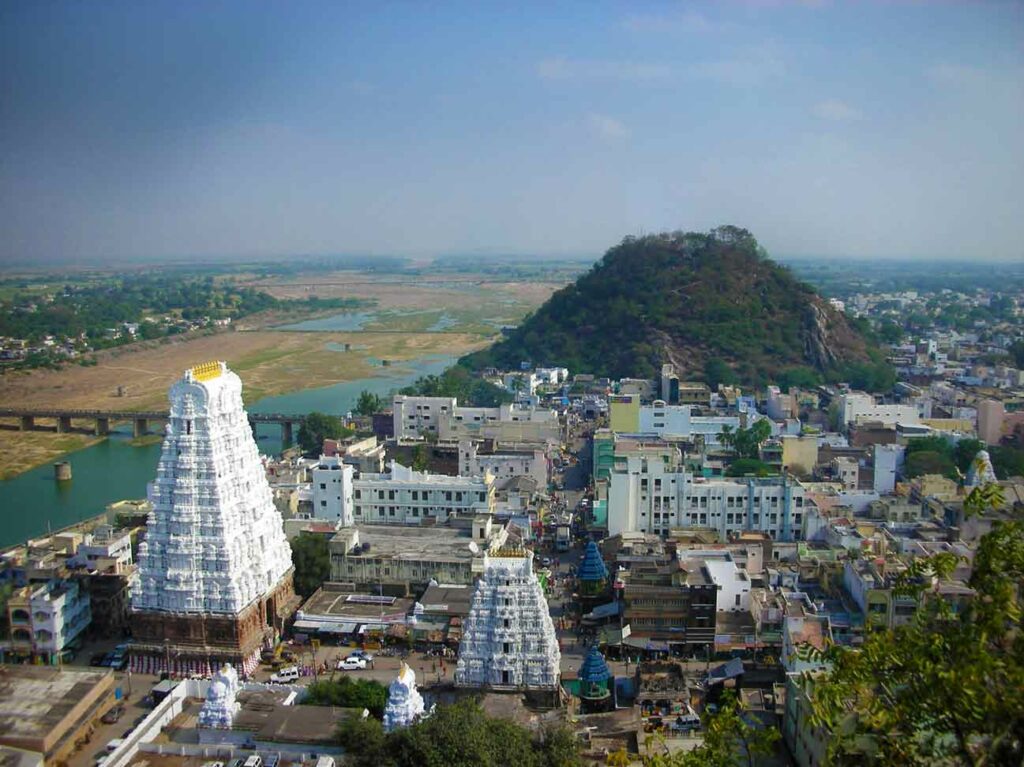
Kalahasti is located 36 km away from the famous temple of Tirupati. The interior of the temple was built around the 5th century and the outside during the 12th century by the Chola and Vijayanagar kings.
Lord Shiva is worshiped here as Kalahasteeswara symbolizing the salvation and the death of the ego. Shiva is embodied by a white Vayu Lingam that is said to be self-manifested (Swayambhu). This lingam can not be touched by the devotees, not even by the Brahmins (priests).
It is said that a lamp in the sanctuary keeps flickering even when no air flow is observed.
5. ETHER/SKY – Chidambaram Temple

The temple complex covers 20 hectares in the heart of the city. This is an ancient and historic temple dedicated to Shiva Nataraja (dancing Shiva) but also to Lord Govindaraja Perumal (Vishnu). This is one of the few temples where both Shaivite and Vaishnavite deities coexist.

The word “Chidambaram” derives from “chit”, which means “conscience”, and “Ambaram”, “heaven” (or aakasam aakayam); This refers to the chidaakasam, the sky of consciousness, which is the ultimate goal to be achieved according to the Vedas (old scriptures). According to a second interpretation “Ambalam” would mean “stage show.” A third theory states that Chidambram derives from “chitrambalam” meaning “dances of God.”
The unique feature of this temple is the idol of Nataraja. It represents Lord Shiva as Lord of the Bharata Natyam dance (Indian classical dance). This is one of the few temples where Shiva is represented by a murthi (anthropomorphic image). The cosmic dance of Shiva Nataraja symbolizes the movement of the universe sustained by Lord Shiva.

Char Dham, meaning ‘four abodes’, is the pilgrimage circuit around the four most revered pilgrimage sites in all India. These are in Badrinath, Dwarka, Puri and Rameshwaram, located at the four cardinal points of the Indian sub-continent.
Hindus believe that a pilgrimage or yatra around the Char Dham cities opens the way to moksha, liberation from the cycle of deaths and rebirths. They also think that every believer should try to visit each of these places at least once in their life.
Chota Char Dham: Over time, another Char Dham pilgrimage circuit has developed, in Uttarakhand state in North India. Its importance has increased considerably since the 1960s, with improvements in roads and other infrastructure. It is known as Chota Char Dham, ‘the four small abodes’ or ‘Himalayan Char Dham’.
Most pilgrims start their Chota Char Dham pilgrimage at Haridwar. Others set off from Rishikesh, or from Dehradun, capital of Uttarakhand. From there, the tradition is to visit Yamunotri, Gangotri, Kedarnath and Badrinath in that order.
CHAR DHAM
Badrinath
Badrinath stands on the river Alaknanda, 3000m above sea level in the Garhwal Himalayas.
According to the sacred Bhagavata Purana texts it is at Badrinath that Vishnu, in his incarnation as Narayana, performed a great penitence for the wellbeing of all living beings.
The town’s main attraction is Badrinath temple. Legend has it that the sage Adi Shankara found a figurine of the god Badrinarayan (Vishnu) made of holy black saligram stone in the river Alaknanda. It was kept in a cave near the Tapt Kund hot springs until the 16th century when the king of Garhwal had it moved to its current temple.
Dwarka
Dwarka is one of the seven oldest and most holy towns in India (the Sapta Puri).
It is said that Lord Krishna, an incarnation of the god Vishnu, migrated from Mathura to Dwarka to found his capital here 5000 years ago. The town is also famous for its saint and poetess Mirabai…
KNOW MORE ABOUT ITPuri
 Puri, in Odisha, a major Hindu pilgrimage town, is the abode of residence of Jagganath, “lord of the universe”, one of the aspects of god Vishnu. The town is entirely dedicated to him.
Puri, in Odisha, a major Hindu pilgrimage town, is the abode of residence of Jagganath, “lord of the universe”, one of the aspects of god Vishnu. The town is entirely dedicated to him.
Devotion here reaches its peak at the Ratha Yatra (chariot festival), when the statues of Jagannatha, his brother Balabhadra and his sister Subhadra are paraded through the streets in chariots…
KNOW MORE ABOUT ITRameshwaram
Ramanathaswamy temple is a major pilgrimage site for Hindus, for several reasons. It contains one of the 12 Jyotir Lingams or “lingams of light”.
It is also one of the 275 Paadal Petra Sthalams, the Shiva temples glorified in the verses of the three most venerated Nayanars (Shivaite saints), Appar, Sundarar and Tirugnana Sambandar…
KNOW MORE ABOUT ITCHOTA CHAR DHAM
Yamunotri
Yamunotri, 3300m up in the Garhwal Himalayas, marks the source of the Yamuna, one of seven India’s most holy rivers.
Yamuna temple, on the left bank of the sacred river, was built by Pratap Shah, a 19th-century Maharaja of Tehri Garhwal. The idol is made of black marble. For Hindus the Yamuna, like the Ganges, has the status of a holy mother.
Gangotri
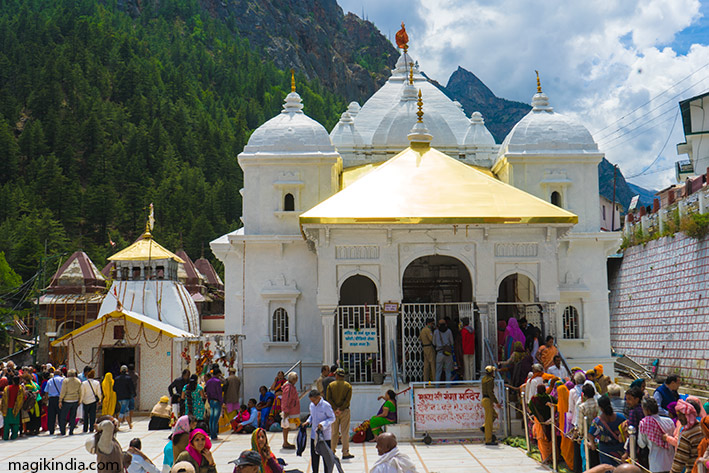
Gangotri is a town near the source of the Ganges, more than 3000m above sea level in the Garhwal Himalayas.
India’s holiest river is called Bhagirathi at its source and Ganga (Ganges) after it reaches Devprayag, where it is joined by the Alaknanda river.
The actual source of the river is at Gaumukh on the Gangotri glacier, 18km from the town. Gangotri temple was built by the Gurkha general Amar Singh Thapa in homage to Mother Ganges.
Kedarnath
Kedarnath is situated about 3583 meters above the sea level near the Chorabari Glacier. It is the abode of one of 12 Jyotirlingam dedicated to Lord Shiva.
According to legend, the five Pandava brothers wanted to meet Shiva to ask him the absolution of their murders committed during the war against the Kauravas. Shiva decided to test them and went from town to town to finally arrive at Kedarnath in the form of a buffalo. Bhima, one of the Pandava brothers recognized him. Shiva decided then to sank into the ground, leaving only his hump on the surface. It is this hump that is worshiped in the temple of Kedarnath.
Due to the extreme weather, the temple is open only late April until November. During the winter, the vigrahas (deities) of Kedarnath temple are transported to Ukhimath.
The temple is not directly accessible by road. It is reached by a trek of 19km.
Badrinath
see above
KNOW MORE ABOUT THE CHOTA CHAR DHAMThe name Kumbha Mela means “festival of the jar”. It is probably the world’s biggest pilgrimage; gathering up to 100 million people in one place, to bathe in the sacred waters of four holy cities.The belief is that it opens the door to moksha (liberation) and spiritual awakening. A surprising and spectacular event that leaves no visitor unmoved, whether they are believers or not.
Attukal Pongal is a special version of the Pongal harvest festival that takes place each year at the Attukal Bhagavathy temple, 2km from Thiruvananthapuram (Trivandrum) in Kerala. On this occasion nearly 3 million women, from all social classes, meet in the streets around the temple to prepare the famous “pongal” rice.




